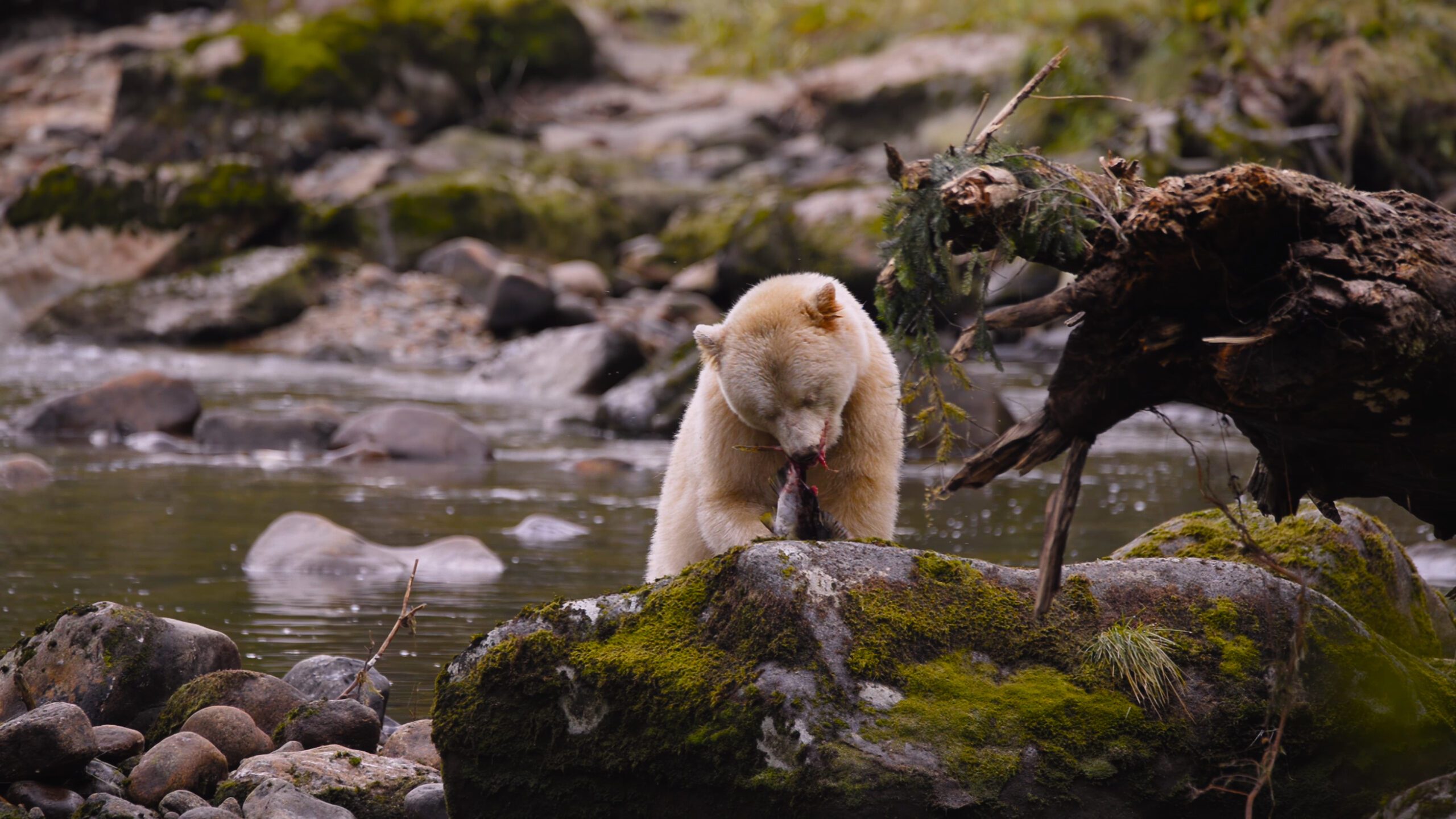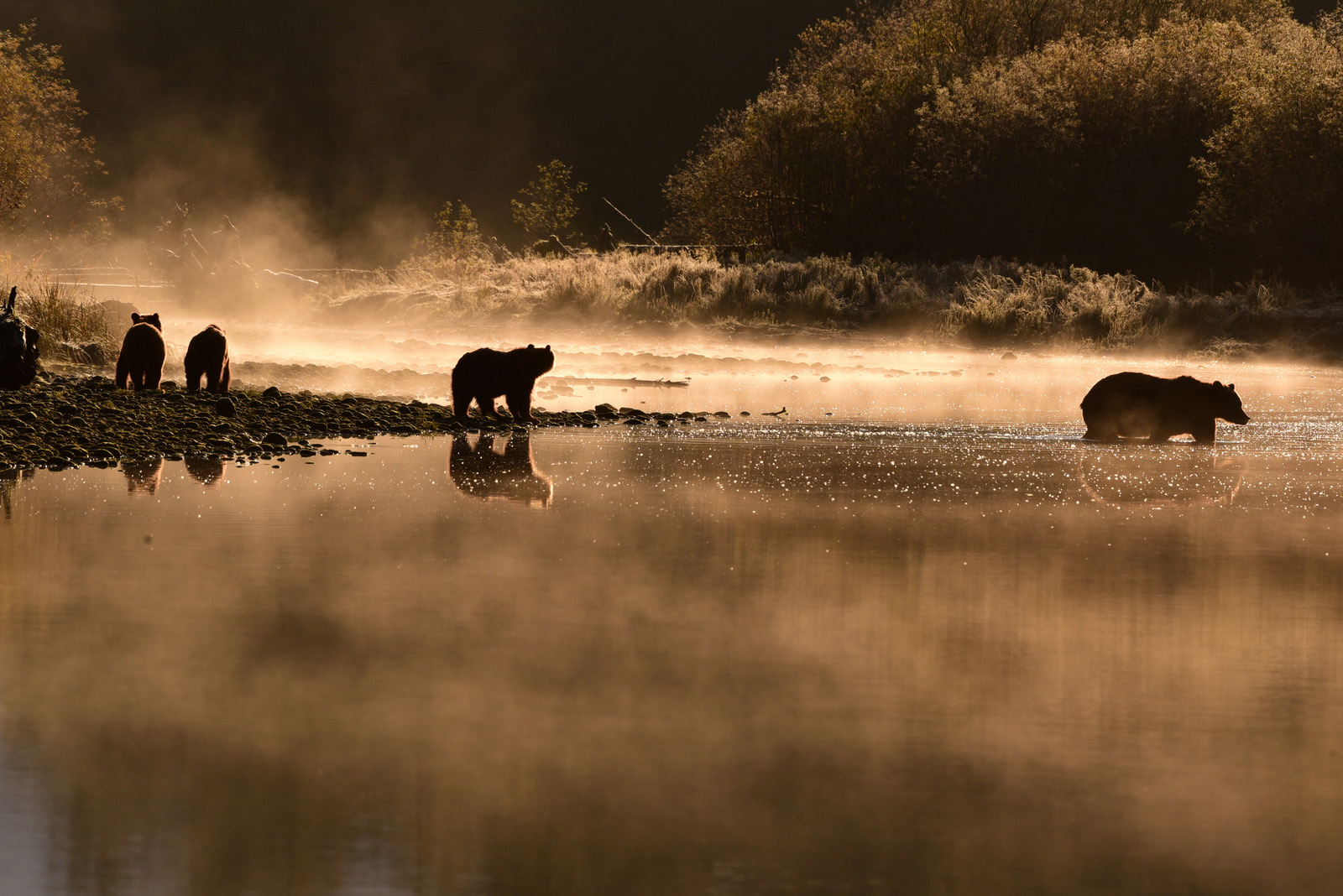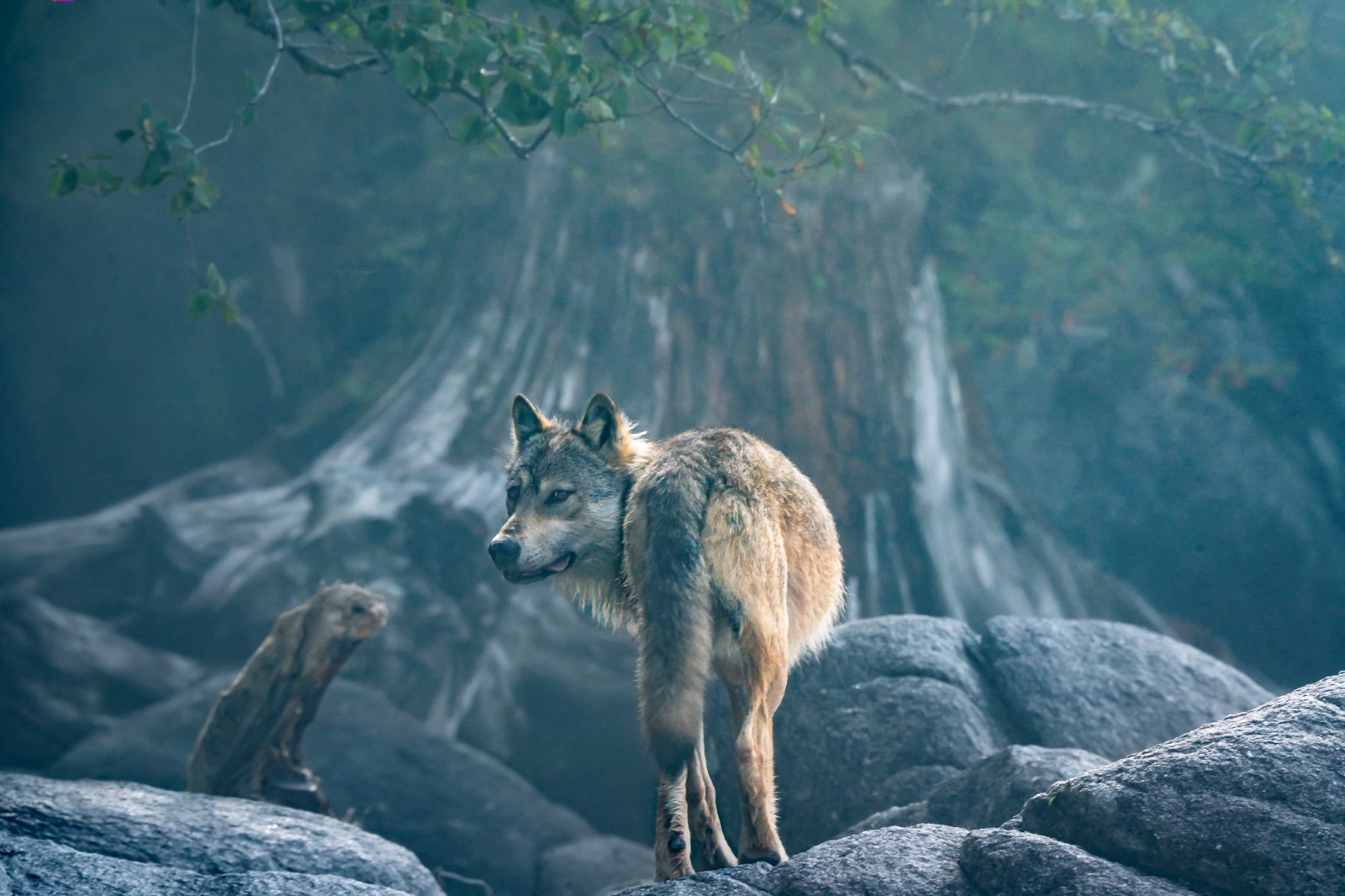The Serengeti may have a lock on our collective imagination when it comes to safaris, but there are other places where you can come face-to-face with wildlife in its natural habitat, and you don’t have to look further than Canada’s Great Bear Rainforest.
Its 6.4 million hectares of fjords, rainforest and islands have become a global beacon for ethical and sustainable nature travel. On this safari, salmon are the wildebeest and the coast’s intricate channels and creeks are the Serengeti plain. Marine mammals hunt the salmon in the sea, bears, wolves and eagles hunt them in the creeks.
While Africa’s Big Five are famous the world over, our local animal kingdom is every bit as awe-inspiring. In fact, it’s arguably a whole lot harder to see bears, sea wolves or whales in the wild, which makes checking them off your bucket list all the more satisfying. Take a look at our pick for the Big Five of the Great Bear Rainforest and when to find them:
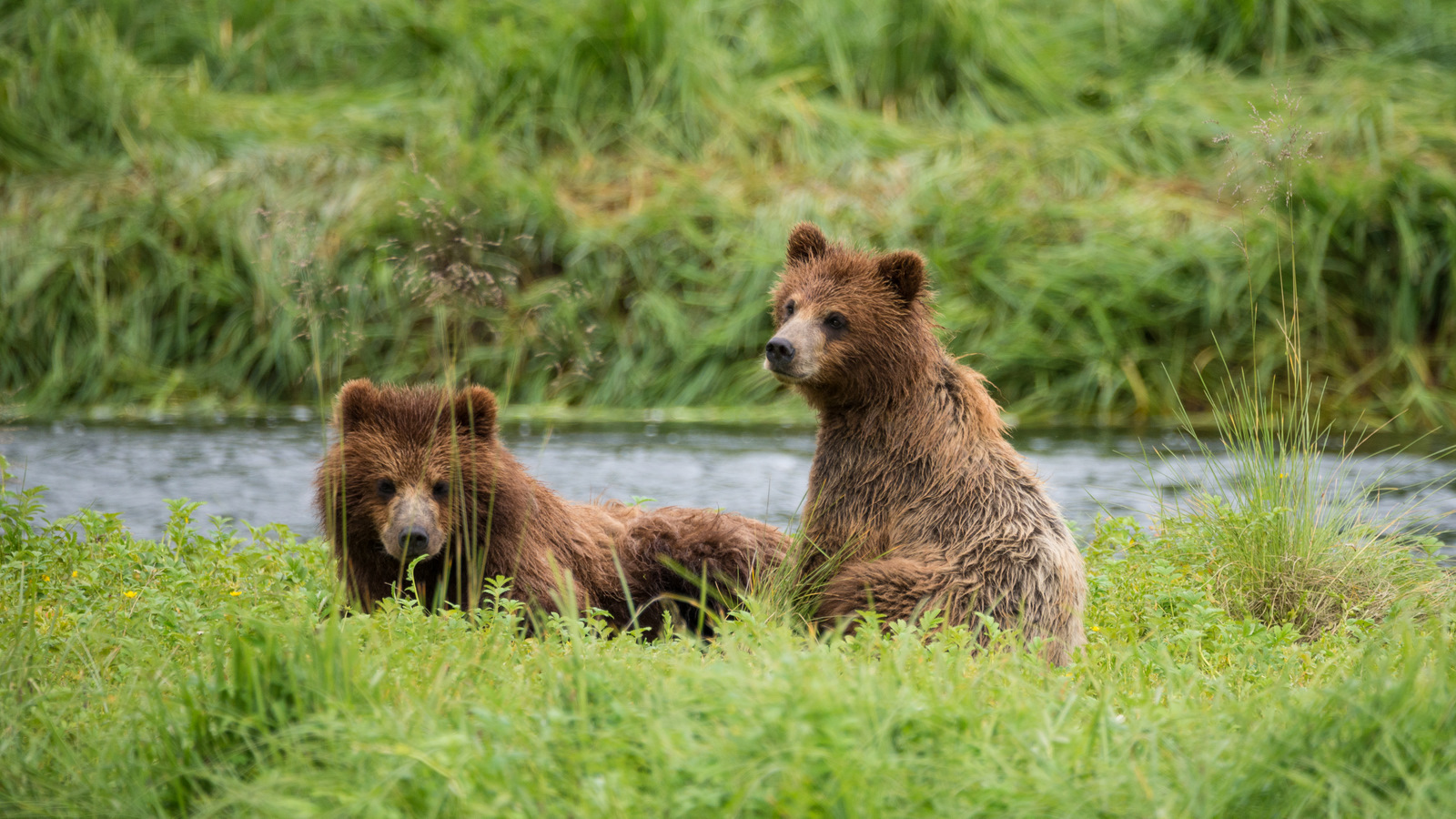
1. Grizzly Bear (Photo: Jeff Reynolds)
Lions may be “King of the Jungle” in their homeland, but they’re not nearly as fearsome as our resident Grizzly Bear. Unlike black bears, grizzlies have long claws and a muscular shoulder hump making them adept at catching fish. Spring through to early summer is peak time for bear viewing, when you will find them foraging berries, rice root, and green sedges. You’ll also have a good chance from the second half of August when the salmon run begins; the annual return of the fish to their spawning grounds is a smorgasbord for resident bears. Grizzlies congregate by rivers to catch an easy meal, and you can watch the spectacle from the safety of guided boat.
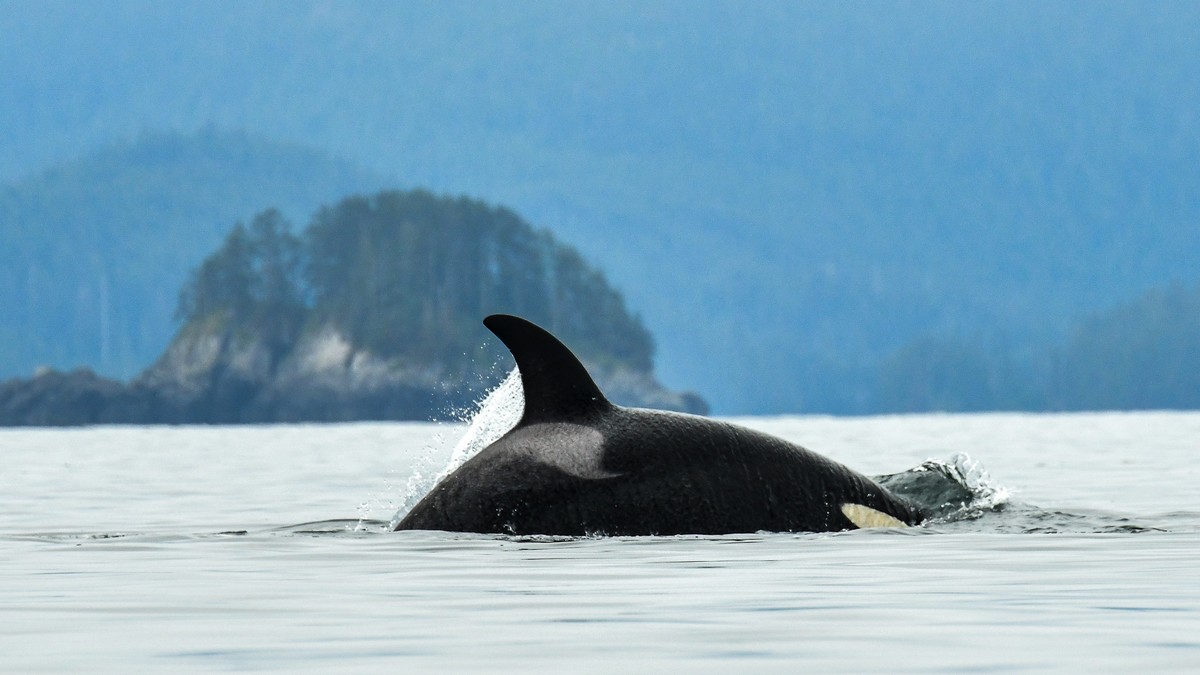
2. Orca (Photo: Philip Stone)
Orcas, or killer whales, are the iconic marine mammal that everyone knows about, but not everyone knows much about. They’re a highly intelligent and social species, with communication skills including echolocation. Orcas use echolocation to find prey, such as seals and fish, and to navigate as well. They emit a series of clicks from their blowholes that are then reflected off of objects in the water or air around them. Though orcas live in three oceans, the Pacific Northwest is one of the best places in the world to view them in spring, summer and fall.
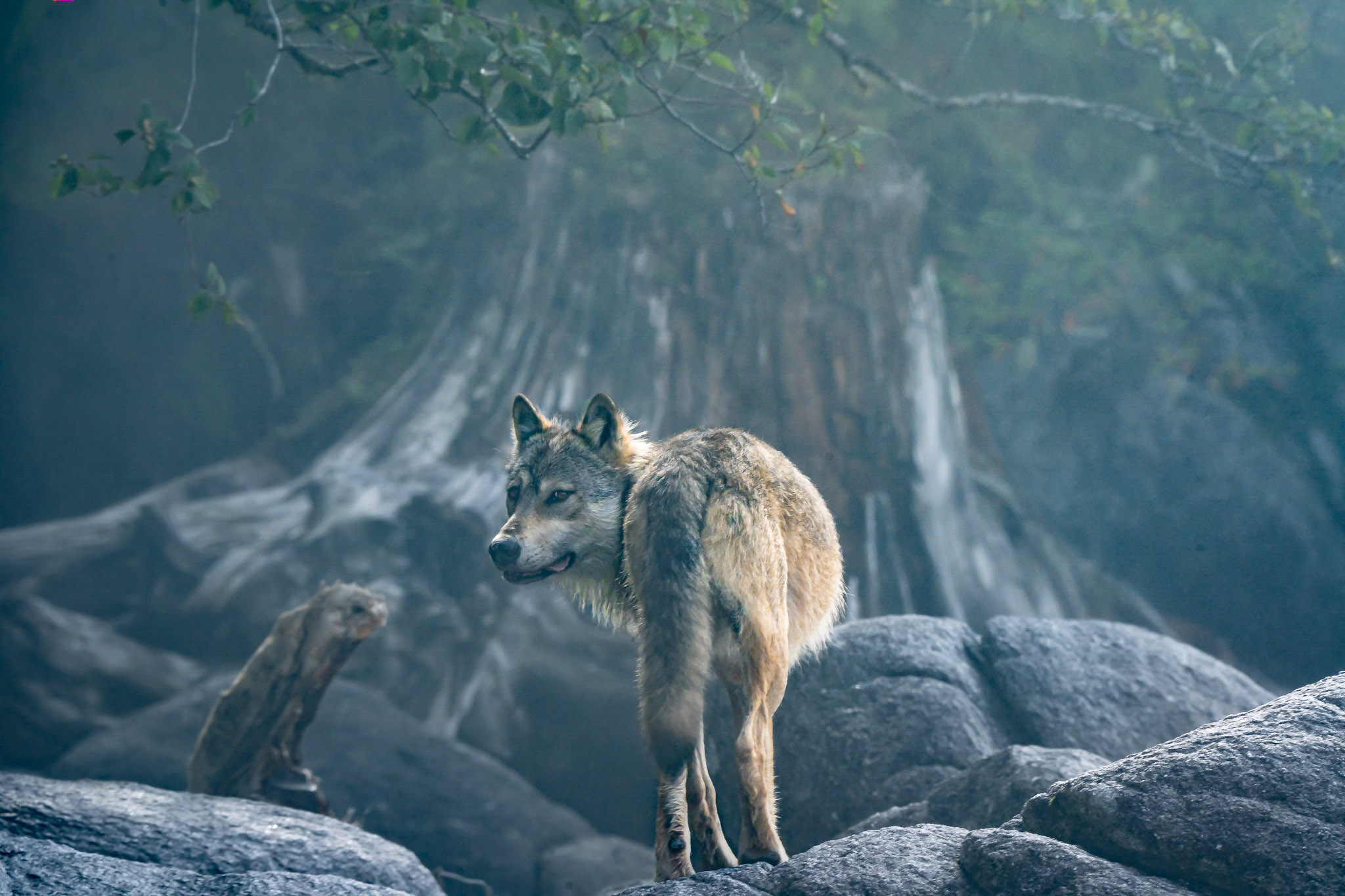
3. Coastal Wolf (photo: Jeff Reynolds)
Sea wolves are genetically distinct from any other wolf in the world, found only in the rainforest along the Pacific coast of Canada. If you’re lucky in summer, you might spot one combing beaches or paddling ocean shallows with their catch of the day. A better indication you’re in wolf country is the lonesome, chilling sound of a wolf howl – the means of communication over long distances for this social pack animal.
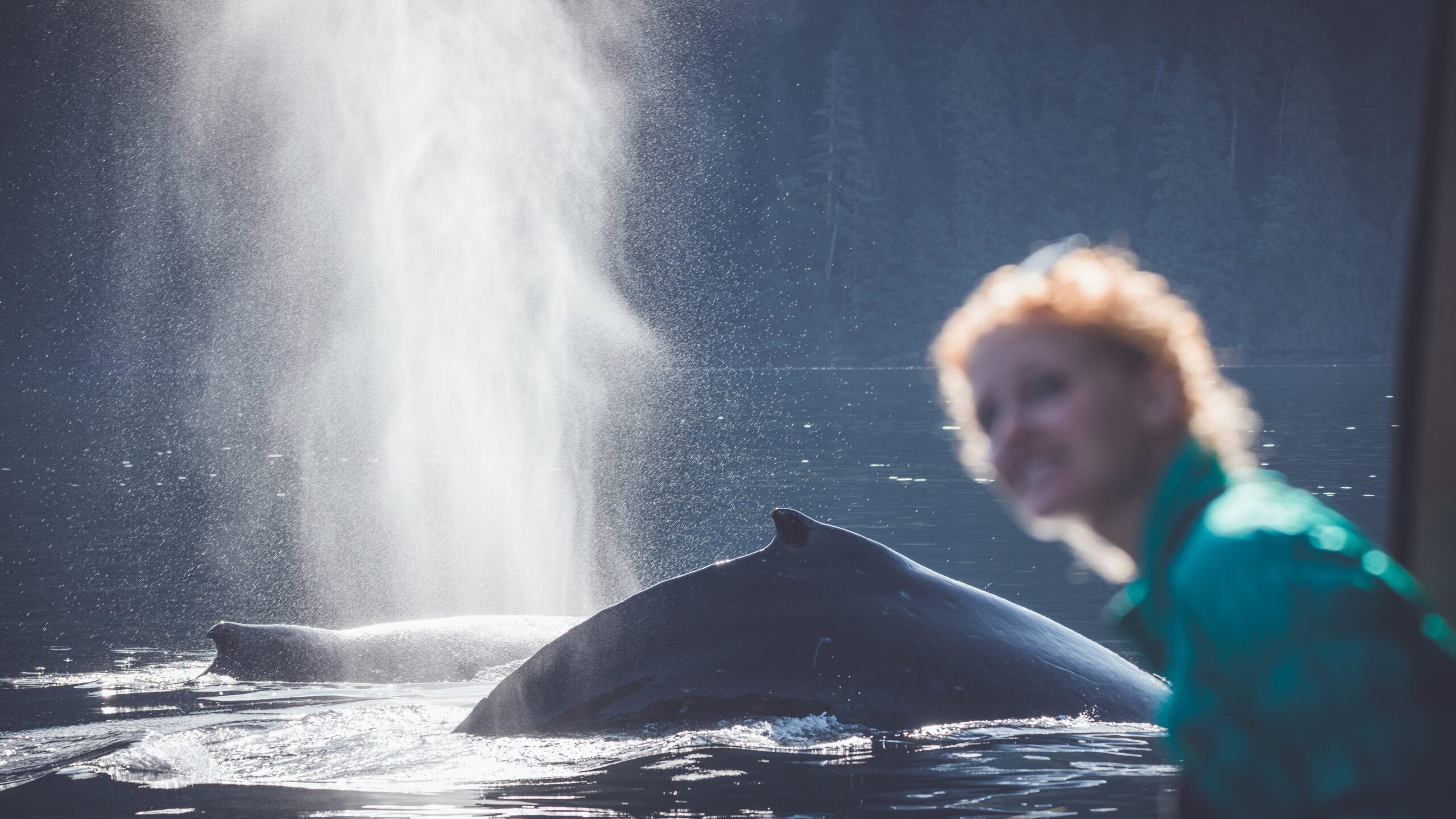
4. Humpback whale (photo: Jeff Reynolds)
Biologically rich waters make the northern British Columbia & Alaska region a hot spot for humpback whales, where they are estimated to have a population of 3,000-5,000. Full grown humpbacks can measure up to 18 meters in length and weigh as much as 40 tons – about five times the size of an African elephant, the largest living land animal. In the ocean, humpback whales rise through clouds of krill or small fish, mouths gaping, feasting on the abundance. As a guest on our expeditions, you can drift for an afternoon in a channel, at the foot of Gil Island’s forested shoulders, listening to the huff of whale breaths around you.
5. Spirit Bear
The pièce de résistance of the Great Bear Rainforest safari has to be its emblematic Spirit Bear. Biologically and culturally significant, the Spirit Bear is a rare subspecies of black bear – and is likely the rarest bear in the world. A double recessive gene causes the creamy discolouration of its fur, which is thought to give it camouflage when looming above salmon. The gene is found within a small sub-population of black bears on very remote islands within the Great Bear Rainforest.
Spirit Bears rely on healthy salmon streams, typically avoiding large estuaries where there might be threat of dominant grizzlies. The best time for Spirit Bear viewing is September to October following autumnal showers. Our experience and knowledge of the region helps us to find these elusive bears for guests to observe in an environmentally responsible manner. While we never guarantee a sighting – each year we have an excellent track record.
A different kind of safari
Like all great safaris, our trips are designed to highlight and work in harmony with the place. And what is the place like?
Once guests board our yachts, and the crew unties the lines that tether it to the end of the road, they’ve left behind the humdrum of modern urban life. As the bow points down the channel, into the maze of coastal islands, mountains rise up to hide that road and soon the pathways are made of water and all one can see, and hear, and smell is nature.
It’s a world where time is measured in the rise and fall of the tide, or the millennia it took a river to erode a mountain and spill mud at its mouth where a meadow now grows. Indicators of change are the yellowing of meadow sedges, the muscular pulse of salmon into the creeks, and the return of bears to the meadows in August to fish.
Because the region’s fjords and archipelagos have no roads, guests move between locations and live and dine aboard one of Maple Leaf’s three expedition yachts. They go ashore multiple times a day for guided wildlife viewing, beach explorations, rainforest walks or other activities.
For guests, Maple Leaf expeditions also provide an opportunity to learn about the conservation work being done and its benefits to the coast, as well as to connect with people along the way, including leaders of Indigenous communities and scientists, who are often part of the guiding crew. Whatever the itinerary, guests have a chance to connect with the Great Bear Rainforest’s natural wonder in a meaningful way.
